On 10 August, a group of Bachelor’s, Master’s and PhD students and early career professionals boarded RV Kronprins Haakon, the advanced icebreaking research vessel that they would call home for three weeks. Some have been on research cruises before. For others, this is the first time they experience scientific research first hand.
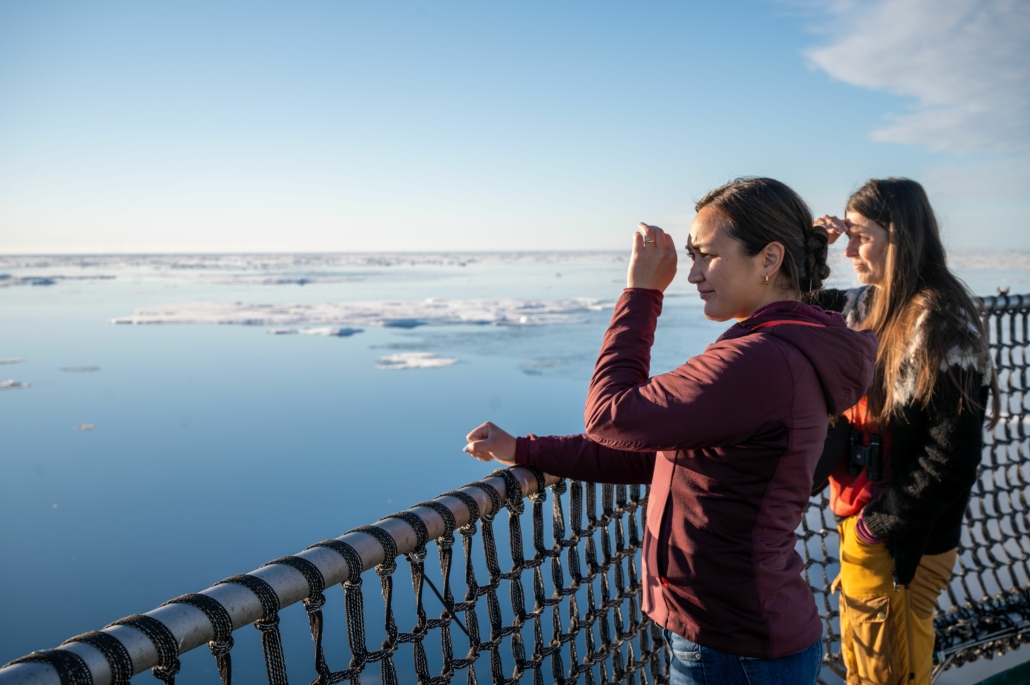
Gazing out at the sea ice edge. 📷 Jessica Cook / Arctic Council Secretariat
In total, 14 students and early career professionals from different Arctic countries, cultures and backgrounds came together and set sail for the Norwgian Polar Institute (NPI) Arctic Ocean Research Cruise II. Each person walked on board with a different background and discipline, from ancient DNA, snow crab monitoring and sea ice deformation to mercury monitoring, Sámi languages and more.
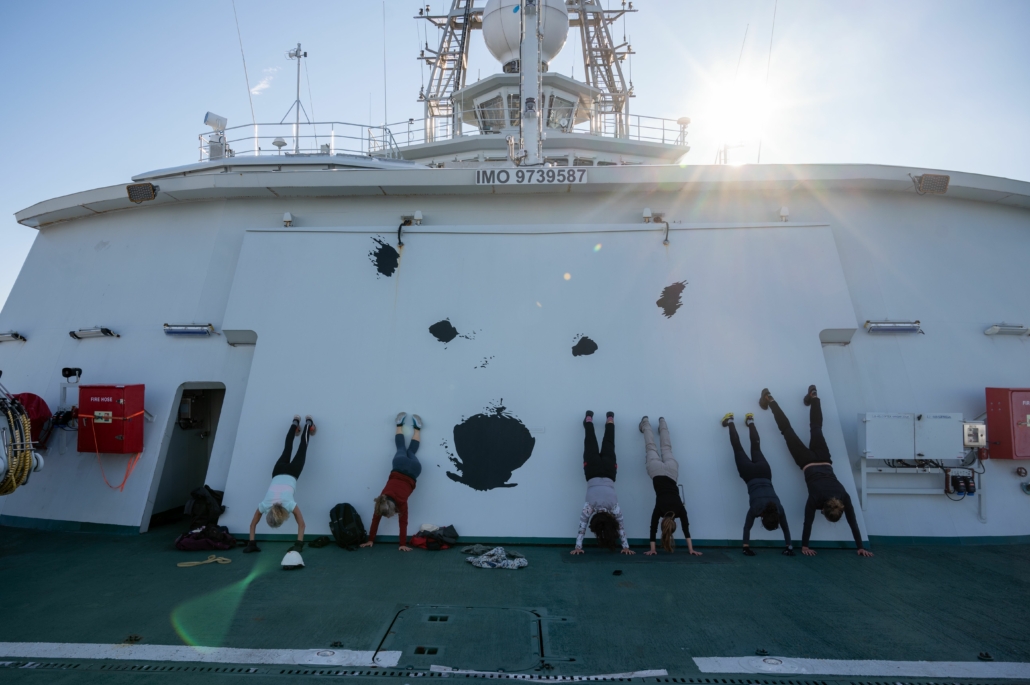
Yoga and workouts on the helicopter deck were favorite pastimes for some students. 📷 Jessica Cook / Arctic Council Secretariat
Despite differences in background and focus areas, everyone on board had at least one thing in common: a desire to gain understanding of the rapidly changing Arctic, the place many of them call home.
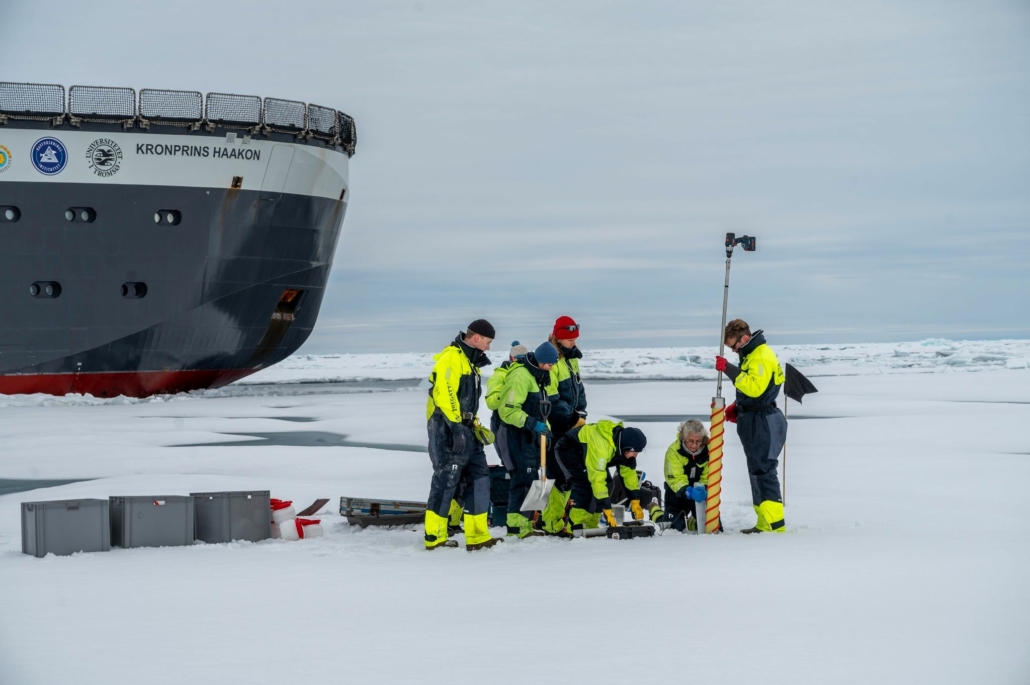
Students drill the first ice core at N 84º. Sea ice conditions made finding a suitable station for ice work challenging. 📷 Jessica Cook / Arctic Council Secretariat
The Arctic surface temperature has increased three times faster than the global average. With ongoing climate change, the Arctic Ocean is in fast transit towards ice-free conditions. Svalbard, the northern Barents Sea and the Nansen Basin are some of the areas that are experiencing the greatest changes, with far reaching impacts. However, the marine ecosystem in the Arctic Ocean is understudied and more research is urgently needed in light of rapid changes.
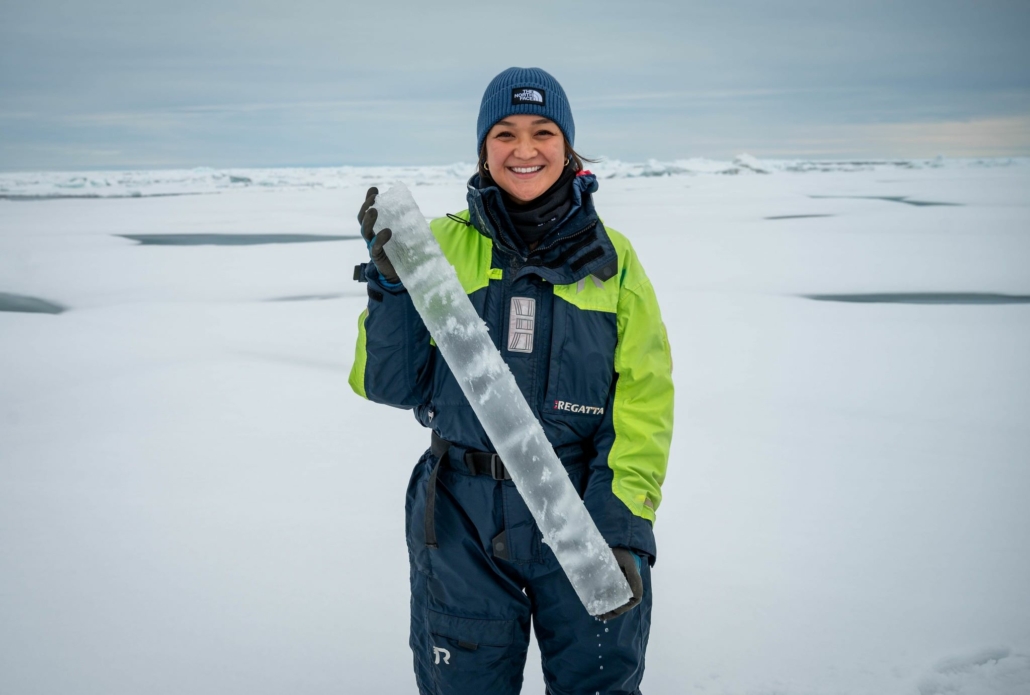
A student holds the first ice core sample. 📷 Jessica Cook / Arctic Council Secretariat
The Arctic Ocean Research Cruise II provided an opportunity for students and early career professionals to gain hands-on experience alongside experienced scientists and experts from the NPI and two Arctic Council Working Groups – the Arctic Monitoring and Assessment Programme and the Protection of the Arctic Marine Environment. The cruise was organized in conjunction with the Norwegian Chairship of the Arctic Council, which places a focus on the ocean, climate and environment, youth engagement and Indigenous Peoples, among other priorities.
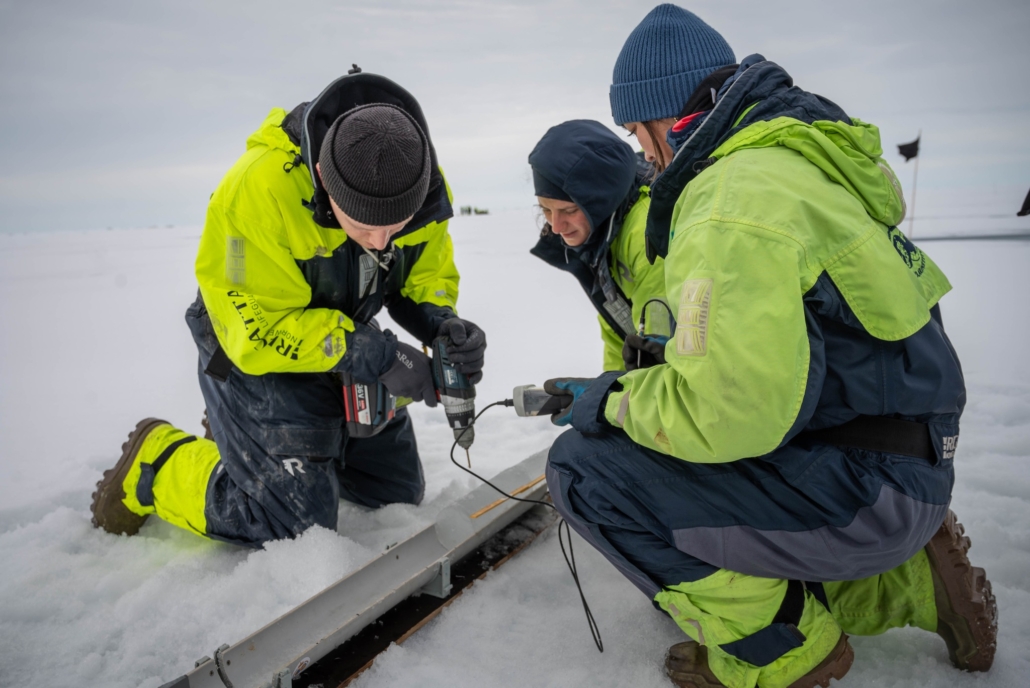
Students working at the ice coring station. 📷 Jessica Cook / Arctic Council Secretariat
The program was designed so that each participant gained experience in the diverse fields of physical and biological oceanography, sea ice, pelagic ecosystem and contaminants. An interactive series of talks and discussions on Arctic changes, issues, strategies and policies was an important part of the cruise. Students also got to present their studies, exchange their experiences and network with fellow participants.
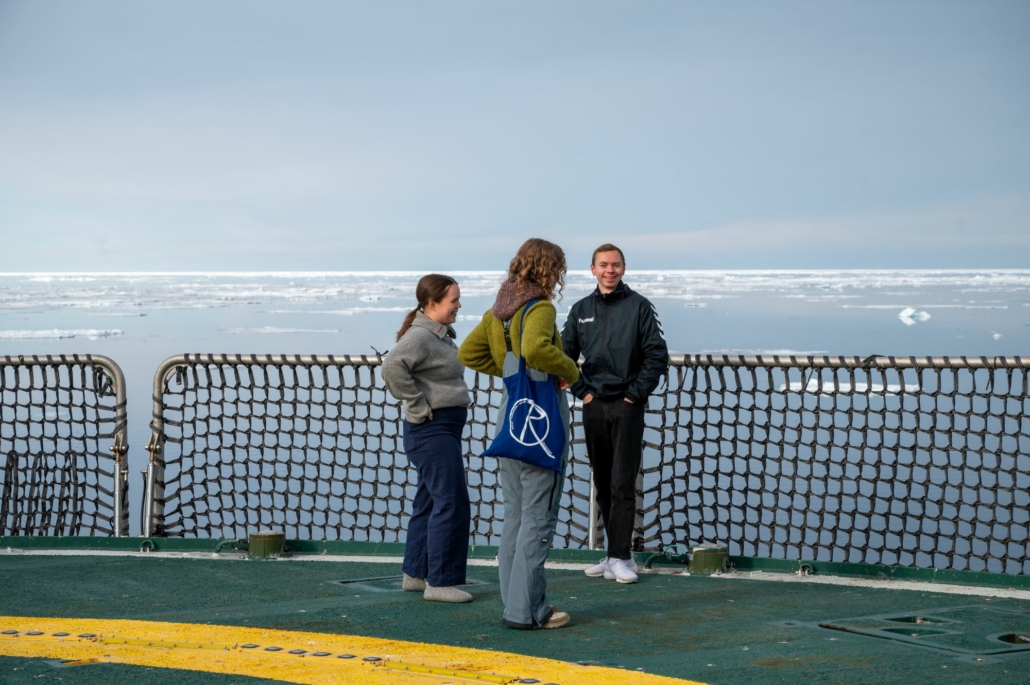
For many of the students, this was their first research cruise and the furthest North they had been. 📷 Jessica Cook / Arctic Council Secretariat
– It’s not very often that we get an opportunity to actually sit down together and engage with people beyond our inner circle of colleagues,” said Juni Bjørneset, Research Technician at NPI.
– There were a lot of presentations on board that sparked important discussions such as deep sea mining, bringing science to policy and other topics that we don’t usually have an opportunity to meaningfully discuss with such diverse perspectives present.
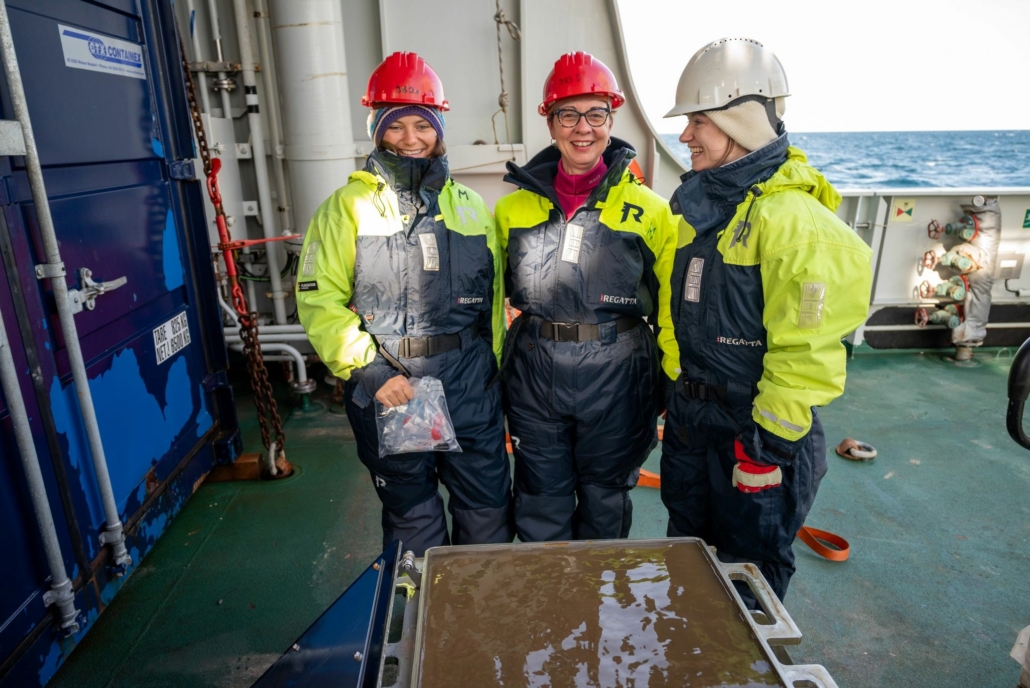
PhD student Flore Wijnands (right) took samples of marine sediment to look for ancient DNA. Sonja Gindorf (left), a PhD student, took samples from the sediment to test for mercury. NPI Research Director Nalan Koc (center) facilitates the coring. 📷 Jessica Cook / Arctic Council Secretariat
Arctic climate change and its effects on ecosystems and communities isn’t something that can be tackled in scientific silos. Nor is it effective to fully explore these topics with science alone. Collaboration between disciplines and cooperation with Arctic communities and Indigenous Peoples is essential to gain more knowledge about these understudied ecosystems.
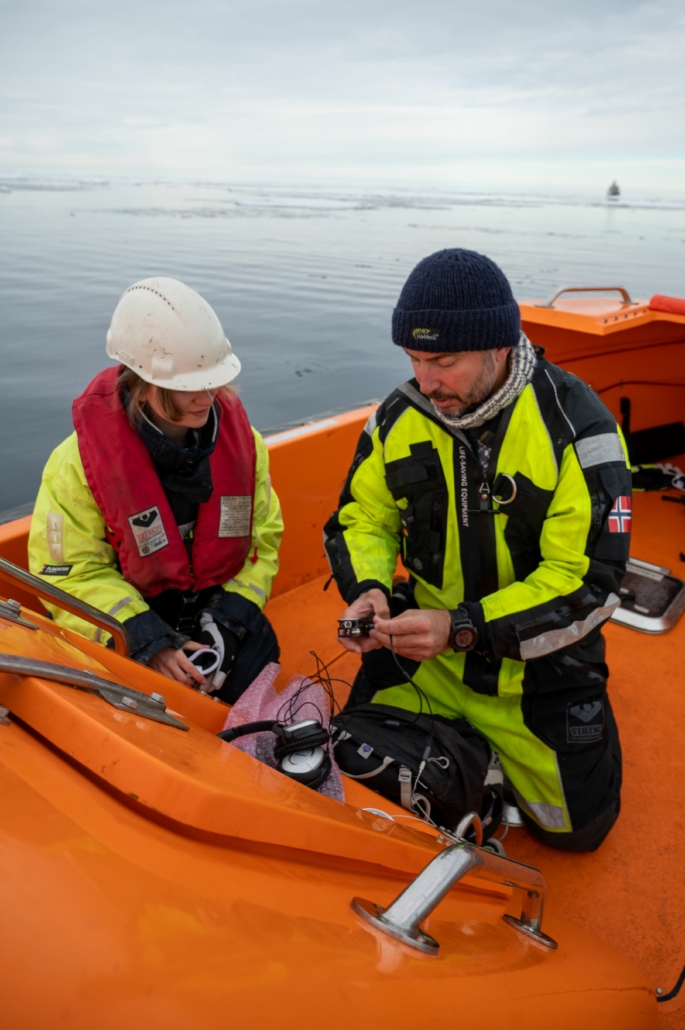
Mario Acquarone of the Arctic Monitoring and Assessment Programme took students on a small boat to record underwater sounds from marine mammals. 📷 Jessica Cook / Arctic Council Secretariat
– Coming from a teacher education and language studies background, it was really interesting for me to learn about research in this field, said Per-Henning Mathisen, recent graduate of the Lector Studies at the University in Tromsø.
– I live in Northern Norway where we already see the effects of climate change, and it’s been really cool to be a part of the research that looks into these changes.
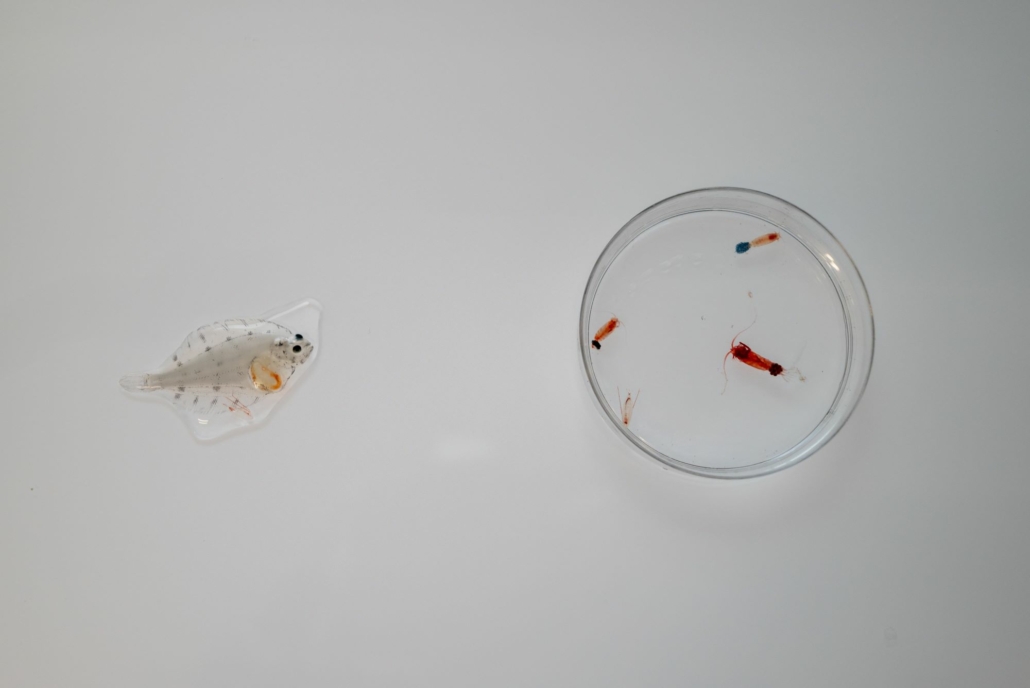
Findings in the Zooplankton lab. 📷 Jessica Cook / Arctic Council Secretariat
– The diversity of people on board has been really valuable. We come from many different disciplines, so it’s interesting to see that many of us use similar methods of research but applied in different ways, said Sonja Gindorf, a PhD student at the University of Stockholm.
– It’s also enlightening to hear from social scientists on board. It helps to broaden our horizons and put things into new perspectives.
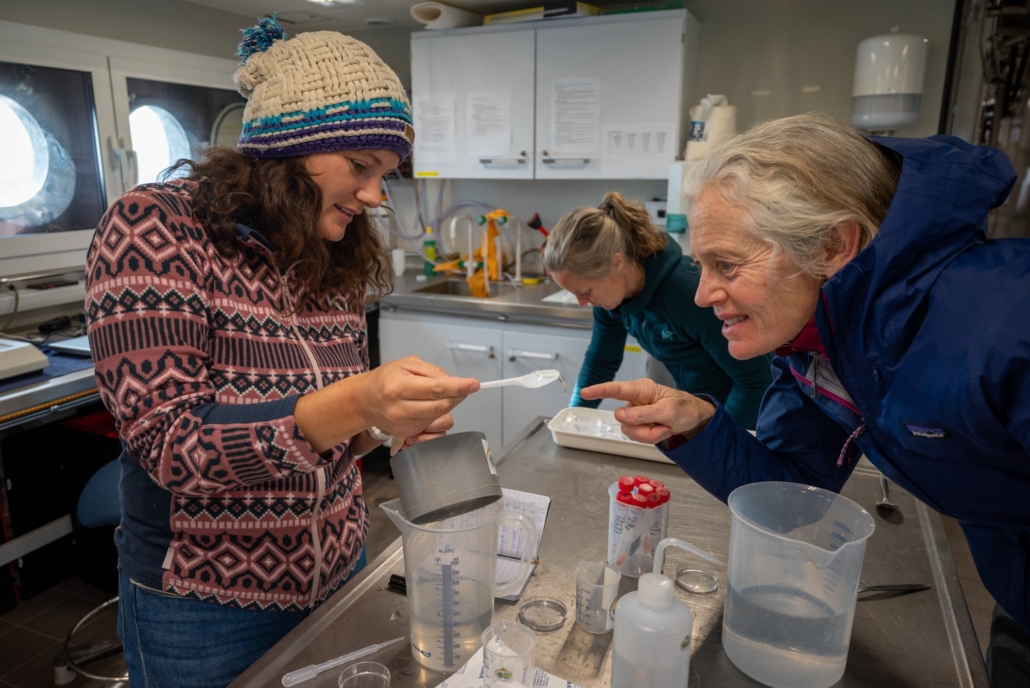
Sonja Gindorf (left) sampling zooplankton as part of her research in the biogeochemical mercury cycle. 📷 Jessica Cook / Arctic Council Secretariat
Several of the students on board shared their cultural background as Aleut, Inuit and Sámi People. By learning about the historic and present day realities of Indigenous Peoples in the Arctic, all participants on board gained a broader context to and understanding of climate impacts to communities.
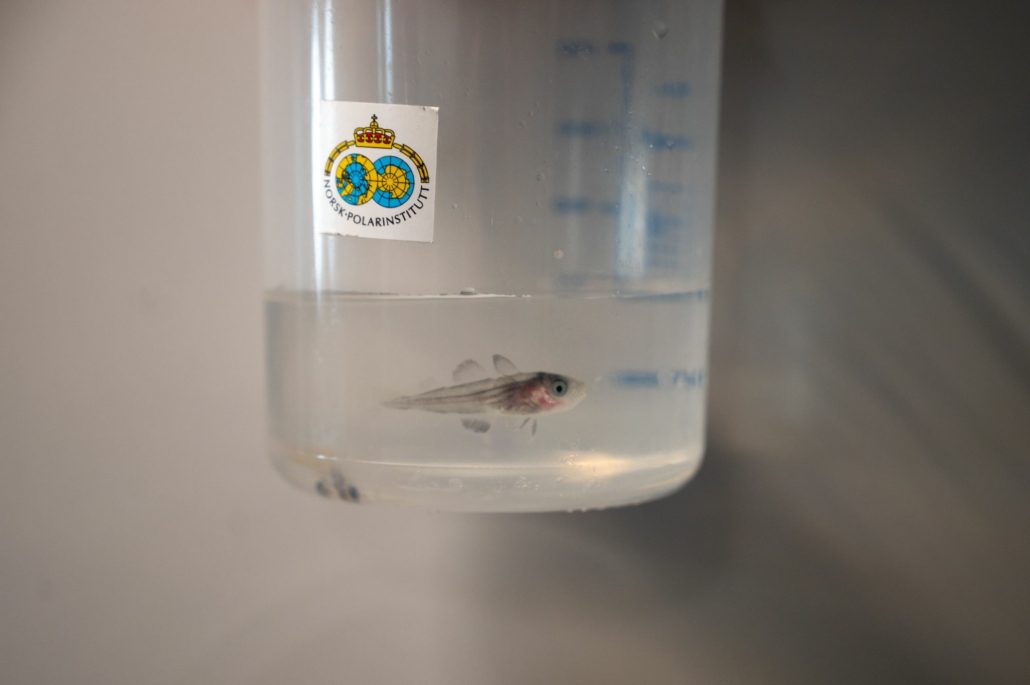
Polar cod. 📷 Jessica Cook / Arctic Council Secretariat
– Climate challenges know no borders. Diversity was therefore a priority when organizing this cruise so that students could build international connections, said Nalan Koc, Research Director at the Norwegian Polar Institute.
– The scientific work on board and gaining knowledge about the Central Arctic Ocean was a big focus for this cruise. But equally important was our focus on creating networking opportunities and capacity building for the scientists and professionals of our future.
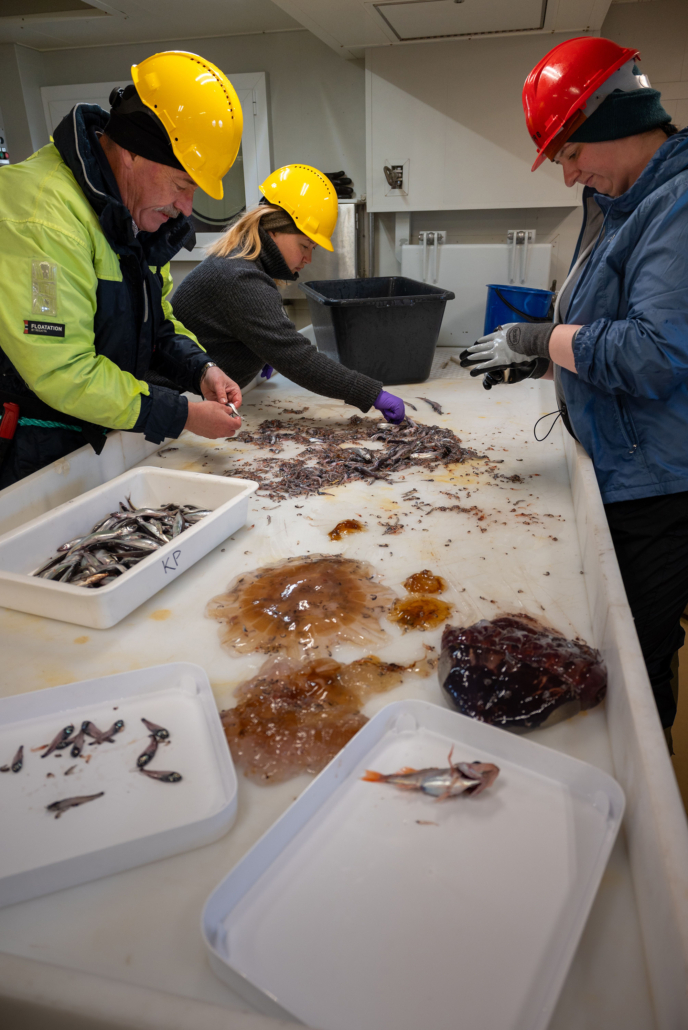
NPI Director assisting students with sorting in the fish lab after a trawl .📷 Jessica Cook / Arctic Council Secretariat
Cruise participants got to witness the rapidly changing Arctic first hand. The cruise initially called for three transects, but when sea ice conditions changed as the cruise took off, another plan was made.
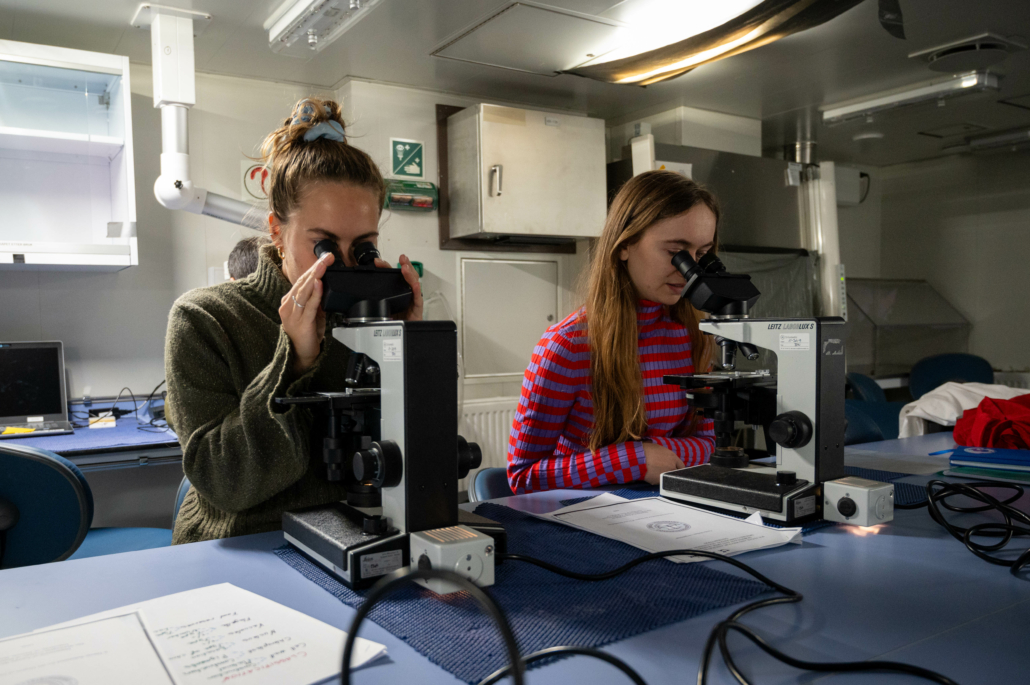
Students examining phytoplankton under a microscope. 📷 Jessica Cook / Arctic Council Secretariat
The sea ice had broken apart allowing the ship to travel further north than originally planned. To take advantage of the conditions, the ship made two transects, with the second going as far north as N 84º.
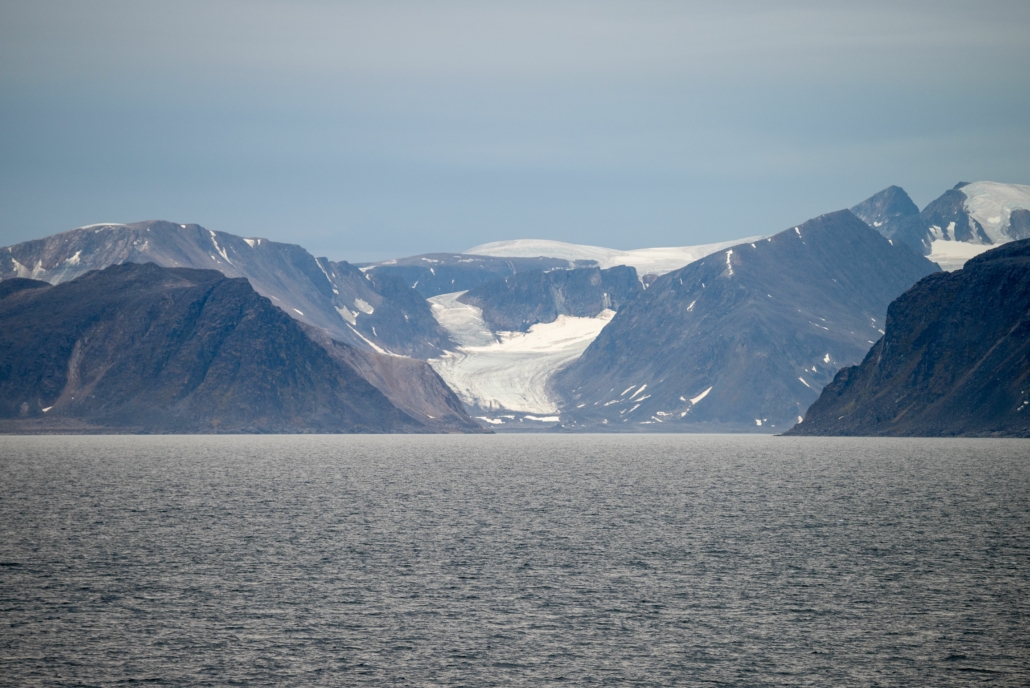
Glacier on Svalbard. 📷 Jessica Cook / Arctic Council Secretariat
– To solve the climate challenges we have before us, the international community must pull together in the same direction as a team, said Ole Arve Misund, Director of the Norwegian Polar Institute.
– While this was just one research cruise in the grand scheme of things, it’s a strong example of how international cooperation in research can be conducted and draw connections across borders among the scientists of tomorrow.
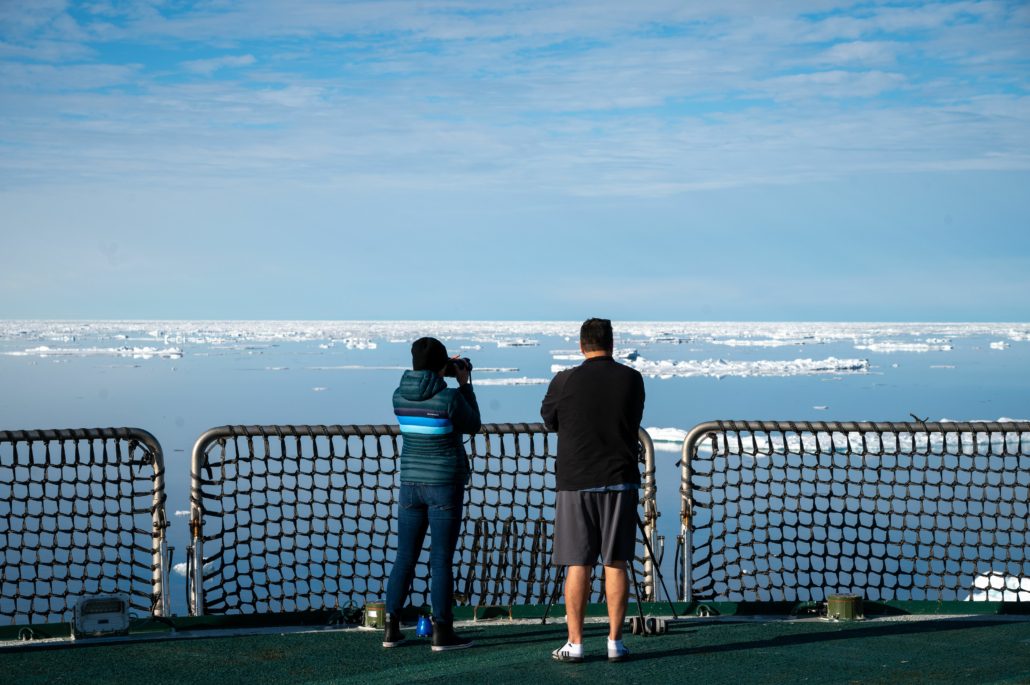
The view sailing North on the West coast of Svalbard. 📷 Jessica Cook / Arctic Council Secretariat





